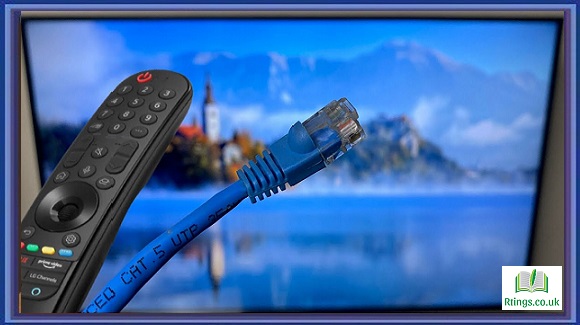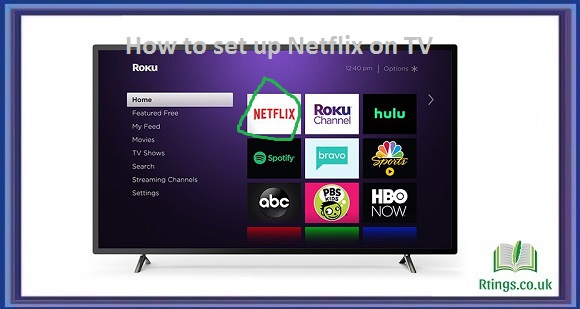Watching TV is impossible if you don’t have an aerial socket. However, there are still several ways you can access TV channels without an aerial socket. In this article, we will discuss some options available to you.
Cable or Satellite TV
One option is to sign up for cable or satellite TV. This will allow you to access a wide range of TV channels, including many unavailable on Freeview. You will need to pay a monthly subscription fee for cable or satellite TV, and you may also need to pay for installation and equipment.
Cable TV is delivered through a cable connected to your home, while satellite TV is delivered through a satellite dish installed on your property. Both cable and satellite TV requires a receiver box, which will decode and display the TV signal on your TV.
Streaming Services
Another option is streaming services such as Netflix, Amazon Prime Video, or Disney+. These services offer a range of TV shows and movies you can watch on demand. You will need an internet connection to access these services and may need to pay a monthly subscription fee.
Many smart TVs now come with built-in streaming apps, so you may not need additional equipment to use these services. Alternatively, you can use a streaming device such as a Roku, Amazon Fire Stick, or Apple TV to access these services on your TV.
Mobile Devices
If you don’t have an aerial socket but have a smartphone or tablet, you can use these devices to access TV channels. Many TV channels now offer apps you can download onto your mobile device. These apps will allow you to watch live TV channels or catch up on TV shows you may have missed.
You can then connect your mobile device to your TV using a cable or a wireless connection such as Chromecast or Apple AirPlay. This will allow you to watch TV channels on your TV using your mobile device as the source.
Live TV Streaming Services
Finally, several live TV streaming services allow you to watch live TV channels over the Internet. These services include YouTube TV, Hulu with Live TV, and Sling TV. You will need an internet connection to use these services, and you will need to pay a monthly subscription fee.
Live TV streaming services can be accessed through a smart TV, a streaming device, or a mobile device. Many of these services also offer cloud DVRs, which will allow you to record TV shows and watch them at a later time.
Conclusion
Several options are available if you don’t have an aerial socket. You can sign up for cable or satellite TV, use streaming services, mobile devices, or live TV streaming services. Each option has its advantages and disadvantages, so it’s important to consider your needs and budget before choosing the best option for you.
Frequently Asked Questions (FAQs)
Can I watch live sports without a cable subscription?
There are several ways to watch live sports without a cable subscription. One option is to use a streaming service that offers live sports channels. Some popular options include ESPN+, Sling TV, fuboTV, and Hulu Live TV. These services offer a range of sports channels, including ESPN, NBC Sports, Fox Sports, and more. You will need an internet connection to use these services, and you will need to pay a monthly subscription fee.
Another option is to use a digital antenna to access free over-the-air sports channels. Many sports events, such as NFL games and the Olympics, are broadcast on networks such as NBC, ABC, and CBS. Using a digital antenna, you can access these channels for free and watch live sports events as they happen.
You can also use social media platforms such as Twitter, Facebook, and YouTube to watch live sports events. Many sports leagues and teams now stream their games live on social media, allowing fans to watch them for free.
Finally, some sports events are available to stream for free on the internet. For example, the Olympic Games and some international soccer matches are available to stream for free on the official websites of the organizing bodies.
What is a VPN and how does it work?
A VPN, or Virtual Private Network, is a tool that allows you to create a secure and private connection to the internet. When you use a VPN, your internet traffic is routed through an encrypted tunnel, which makes it more difficult for anyone to intercept or monitor your online activities.
You must first sign up for a VPN service to use a VPN. Many different VPN services are available, and each service may have different features and pricing options. Once you have signed up for a VPN service, you must download and install the VPN software onto your device.
When you connect to the internet through a VPN, the VPN software will encrypt your internet traffic and send it through a remote server. This server will act as a middleman between your device and the websites or online services you are accessing. A remote server will hide your IP address, making your online activities more difficult to track.
One of the main benefits of using a VPN is that it can help protect your privacy and security online. By encrypting your internet traffic, a VPN can prevent hackers, government agencies, and other third parties from monitoring your online activities.
Another benefit of using a VPN is that it can allow you to access online content that may be restricted in your location. For example, suppose you are traveling to a foreign country and want to access your favorite streaming services or websites. In that case, a VPN can help you bypass geographic restrictions and access this content anywhere.
What is cloud computing and how does it work?
Cloud computing is a technology that allows users to access computing resources, such as servers, storage, and software, over the Internet. Instead of running applications or storing data on local devices, users can use cloud computing services to access these resources remotely.
Cloud computing uses a network of remote servers that third-party providers host. These servers are accessible over the Internet, and users can connect to them using a variety of devices, such as laptops, smartphones, and tablets.
There are several different types of cloud computing services, including:
Infrastructure as a Service (IaaS): This provides users access to virtualized computing resources, such as servers, storage, and networking.
Platform as a Service (PaaS): This service provides users with a platform for developing, testing, and deploying applications.
Software as a Service (SaaS): This service provides users with access to software applications that third-party providers host.
Cloud computing offers several benefits over traditional computing models. For example, cloud computing can be more cost-effective than purchasing and maintaining local computing resources. Additionally, cloud computing can be more scalable, allowing users to add or remove computing resources as needed easily.
Cloud computing can also be more flexible, allowing users to access computing resources from anywhere with an internet connection. This can be especially useful for businesses that have remote employees or need to collaborate with partners or customers in different locations.






